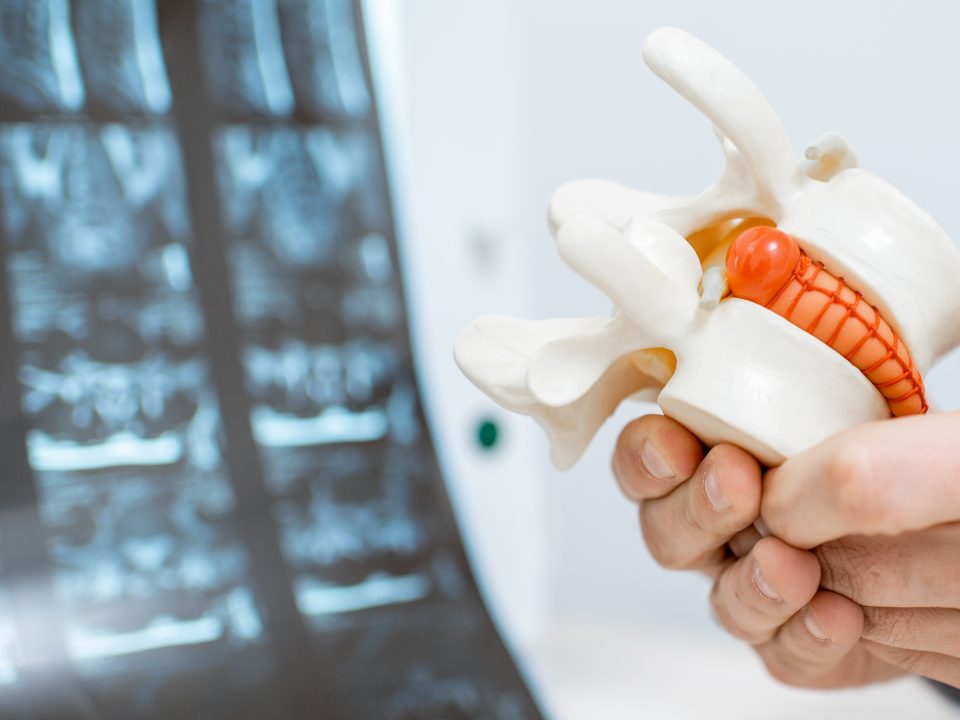
The stenosis foraminal and spinal stenosis cervical spondylosis : causes, symptoms and treatment options
05/03/23
The benefits of hot or cold therapy for neck pain relief
05/03/23Cervical disc herniation: understanding the causes, symptoms and treatment options
Summary
- Introduction to Cervical Disc Herniation
- Causes of cervical disc herniation
- Symptoms of cervical disc herniation
- Diagnosis of cervical disc herniation
- Treatments for cervical disc herniation
- Conclusion
Introduction to Cervical Disc Herniation
The herniated disc cervicale est une condition médicale qui touche les disques intervertébraux de la colonne cervicale (cou). Ces disques agissent comme des amortisseurs entre les vertèbres et leur dégradation peut entraîner des douleurs, des pincements nerveux et d’autres problèmes. Dans cet article, nous examinerons les causes, les symptômes et les options de traitement pour la hernie discale cervicale.

Causes of cervical disc herniation
The main causes of cervical disc herniation are:
- Aging: With age, intervertebral discs can weaken and become dehydrated, increasing the risk of herniation.
- Trauma: Accidents and falls can cause neck injuries, resulting in a herniated disc.
- Overweight: Being overweight puts extra pressure on the spine, which can promote the development of a herniated disc.
- Intense physical activities: lifting heavy objects or performing repetitive movements can damage the intervertebral discs.
Symptoms of cervical disc herniation
Cervical disc herniation symptoms can vary depending on the severity and location of the herniation. They may include:
- Pain in the neck, shoulders or arms
- Muscle weakness
- Numbness or tingling
- Difficulty moving the neck

Diagnosis of cervical disc herniation
Diagnosis of cervical disc herniation is usually made using a combination of physical examination and imaging tests, such as X-ray, MRI, or CT scan. These tests allow the doctor to visualize the intervertebral discs and assess the extent of the herniation.
Treatments for cervical disc herniation
There are several treatment options for cervical disc herniation. A comparative table of these treatments is presented below:
| Treatment | Benefits | Disadvantages |
|---|---|---|
| Spinal decompression therapy | – Non-surgical treatment<br> – Lasting pain relief<br> – Improved mobility<br> – Reduced pressure on the nerves | – May require several sessions<br> – Results may vary by patient |
| Osteopathy | – Helps correct muscle and joint imbalances | – Less durable results compared to decompression<br> – May require several sessions<br> – Results may vary by patient |
| Drugs | – Can temporarily relieve pain<br> – Easy to administer | – Can mask the symptoms without treating the cause<br> – Possible side effects<br> – Less effective than decompression |
| Injections | – Fast pain relief<br> – Precise targeting of the affected area | – Temporary effects<br> – Risks related to injections<br> – May require multiple injections<br> – Less effective than decompression |
Neurovertebral decompression is often considered a Effective non-surgical treatment option for herniated disc cervicale, car elle permet de soulager la pression sur les nerfs et d’améliorer la mobilité. En comparaison avec d’autres traitements tels que l’ostéopathie, les médicaments et les injections, la Spinal decompression therapy présente des avantages significatifs en termes d’efficacité et de durabilité des résultats. Toutefois, il est important de consulter un professionnel de la santé pour déterminer le traitement le plus approprié pour votre situation.

It is important to consult a healthcare professional to determine the most appropriate treatment for your situation. There Neurovertebral decompression is often considered as a treatment option non-surgical treatment effective for cervical disc herniation because it relieves pressure on the nerves and improves mobility. However, other treatments such as osteopathy, medications and injections can also be considered depending on individual needs.
Conclusion
Cervical disc herniation is a medical condition that can cause pain and mobility issues. Understanding the causes, symptoms, and available treatment options can help make an informed decision on how to manage this condition. Consultation with a healthcare professional is essential to determine the best treatment approach for each individual.
The Spinal decompression therapy est un traitement qui vise à réduire la pression sur les disques intervertébraux et les nerfs de la colonne vertébrale. Cela permet de favoriser la guérison des disques endommagés et d’améliorer la qualité de vie des patients souffrant de hernie discale cervicale. Cette technique non-chirurgicale est souvent préférée aux autres méthodes de traitement, car elle offre des résultats durables et permet d’éviter les complications et les temps de récupération associés aux interventions chirurgicales. Il est important de noter que la décompression neurovertébrale peut être combinée avec d’autres traitements tels que l’ostéopathie, la médication et les injections pour une prise en charge globale de la hernie discale cervicale.
When it comes to treat a herniated disc cervical, it is essential to consult a qualified healthcare professional for an accurate diagnosis and personalized treatment plan. The TAGMED Montreal & Terrebonne Clinic is a clinic specializing in the treatment of neck and spine problems, offering solutions adapted to the needs of each patient. By calling on specialists in Spinal decompression therapy, osteopathy, medication and injections, the TAGMED Montreal & Terrebonne Clinic aims to offer the best care to effectively treat cervical disc herniations and improve patients' quality of life.






